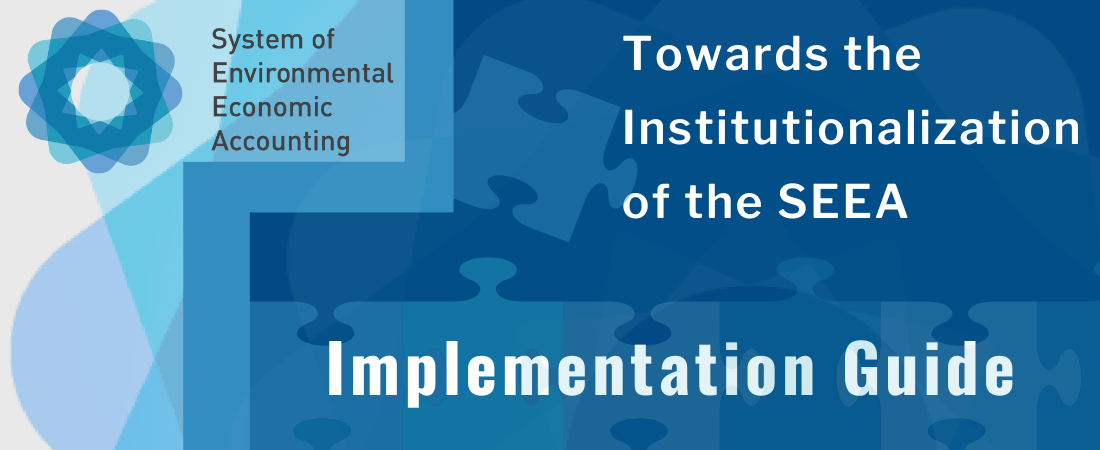Towards the Institutionalization of the SEEA: Implementation Guide
This is the dedicated website for the new SEEA Implementation Guide published in 2023, which replaces the Implementation Guide from 2014. This implementation Guide covers both SEEA Central Framework and SEEA Ecosystem Accounts and is structured as a website to facilitate finding information more quickly. Below you can find the chapters of the guide.
| 1. Strategic planning |
|
|
|
||
| 3. Compiling accounts |
|
|
| 4. Disseminating accounts |
|
|
| 5. Institutionalizing the SEEA |
|
0. Introduction
This section explains the purpose of the implementation guide and its structure and scope. The Guide focuses on country level steps to implementation. It provides relevant information for both countries that are to implement the SEEA and countries that have some experience in compiling SEEA accounts. It also provides a short summary of the global strategy with emphasis on how it supports country level work and its relationship to the implementation guide.
1. Strategic Planning
This section covers the characteristics of a strategic plan and outlines its development in two steps: (1) establishing a core group, and (2) conducting a national assessment. It then outlines several other aspects in the development of a strategic national plan, such as identifying stakeholders, policies and data sources. This section also provides recommendations on how to determine priority accounts and next steps, as well as features a few examples from countries on the process of developing a strategic national plan.
2. Building mechanisms for implementation
This section outlines the potential institutional set-ups, such as the steering committee and the implementation/technical groups that are needed for a successful implementation of SEEA. It also features examples from countries on their institutional mechanisms.
3. Compiling the accounts
This section discusses data sources, compilation of the accounts by the technical committee, collaboration with line ministries/research institutions, additional resources and activities to support implementation, and some specific compilation and dissemination issues most relevant to SEEA EA. It also features a few examples on how countries go about compiling and disseminating the accounts.
4. Disseminating the accounts
This section focuses on some of the good practices around disseminating the accounts, identifying the main users of accounts and their information needs, and outlines a few country examples and useful reference materials.
5. Institutionalizing the SEEA
This fifth and final section focuses on the legal mandates for regular production of SEEA accounts, formalization of mechanisms between institutions, the funding mechanisms, and how to move from piloting to regular production. It also presents a few examples from countries on these issues.

